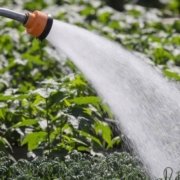Alongside other cornerstone industries such as tourism and biotechnology, agriculture sustains the San Diego County’s economy with a farmgate value of nearly $2 billion a year, according to the most recent county assessment. Avocados – one of the county’s signature farm goods — account for $140 million of the farming total growth of 16% in 2019, county figures show.
And all the crops countywide are supported by reliable water supplied by the San Diego County Water Authority and its 24 member agencies, which have invested strategically over the past three decades to ensure water availability even during dry years. The Water Authority has also created a special ag water program that offers lower-cost water in return for lower reliability so that farmers can choose the level of service that works best for them.
“San Diego’s dynamic agricultural industry strengthens our region by employing thousands of people, contributing to the local economy, supporting the local food system and enhancing sustainability efforts,” said San Diego County Agricultural Commissioner Ha Dang. “All efforts to support our diverse agricultural economy are important, including water reliability and accessibility.”
San Diego County ag production is the combined result of more than 5,000 family farms – the most of any county in the United States. In fact, 69% of all San Diego County farms are smaller than nine acres. Innovative practices – including water-use efficiency measures – allow local farms to be productive by focusing on high-value crops such as ornamental trees and shrubs, bedding plants, cacti and succulents and indoor plants.
Agriculture directly employs 56,000 people in San Diego County, including the second-largest number of farms operated by women and the largest number of part-time farmers in the U.S. Along with avocados, San Diego County farmers rank first in the nation in production of nursery crops, and among the top five producers nationwide of lemons, limes, guavas, pomegranates, and macadamias.
Water Authority offers ag discount
In partnership with its member agencies, the Water Authority offers a Permanent Special Agricultural Water Rate Program to continue supporting commercial farms that are the economic engine of rural San Diego County.
In exchange for lower price water, participants in the ag water program agree to have lesser water service when the Metropolitan Water District of Southern California cuts supplies to San Diego County. It is similar to power companies offering lower rates to customers who agree to have their power service interrupted during peak demand periods. In turn, the Water Authority can reallocate those supplies as needed to commercial and residential customers who pay higher rates for full reliability benefits.
An important deadline for the ag water program is coming at the end of June, and farmers who want to take advantage of lower rates should contact their retail water agency for details.



